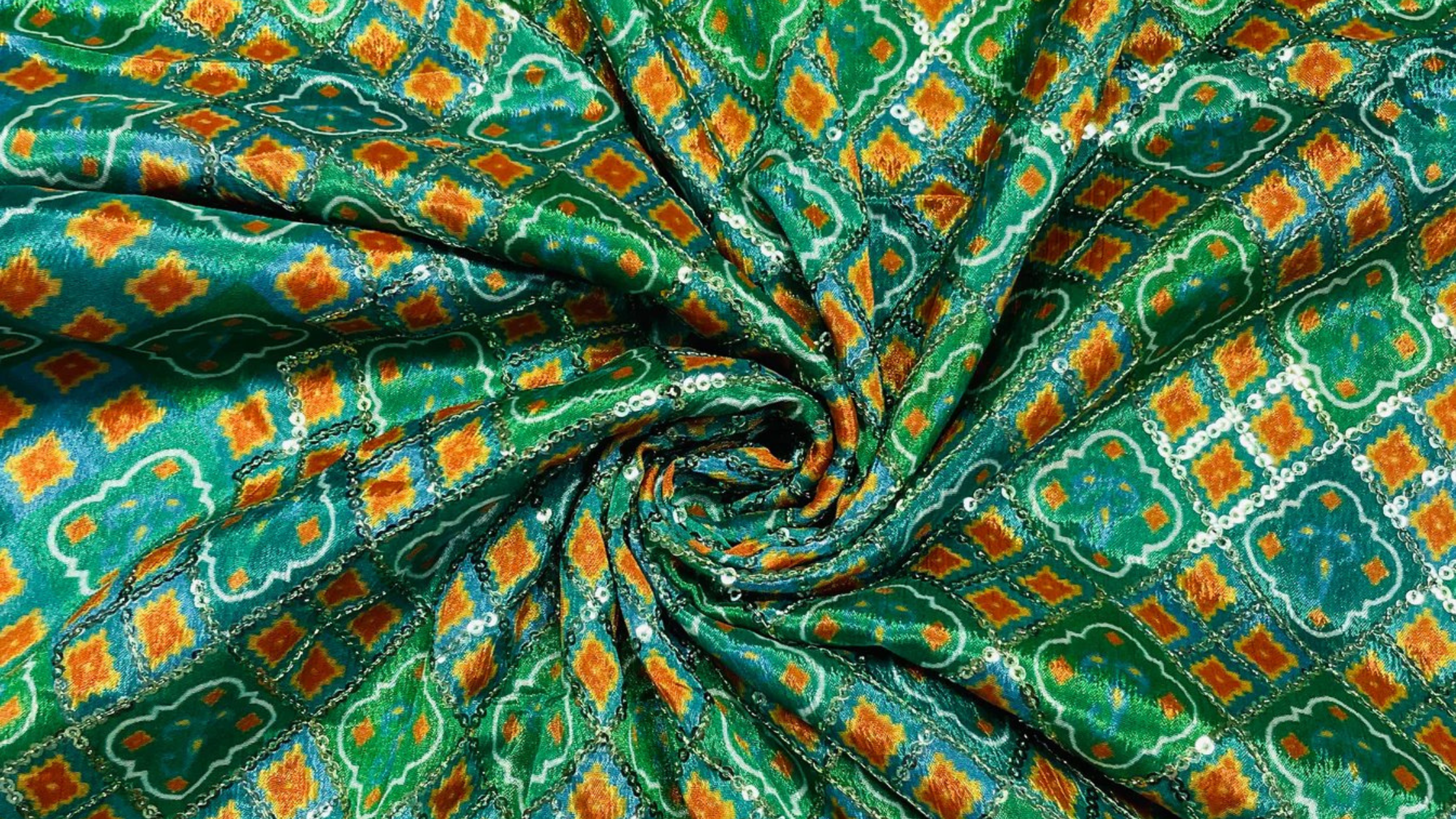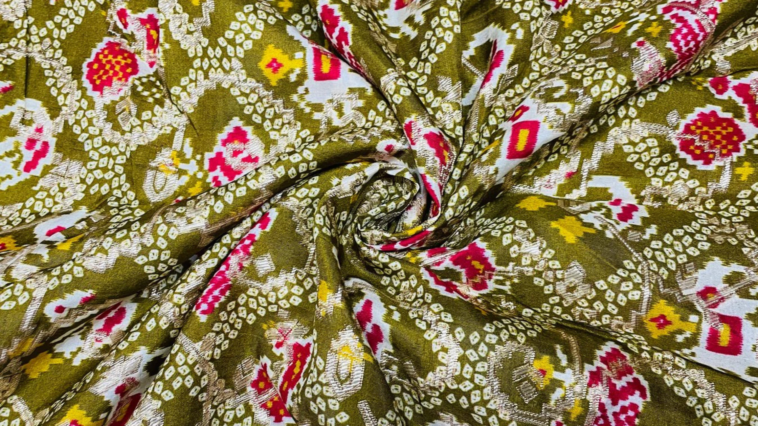In the world of textiles, there are few traditions as captivating and enduring as the art of Bandhani design. Originating in India, this intricate and vibrant tie-dye technique has a rich history that spans centuries and holds deep cultural significance. The word “Bandhani” itself is derived from the Sanskrit term “bandhana,” which means ‘to tie.’ This article delves into the fascinating journey of bandhani print, exploring its history, techniques, and its enduring cultural importance.
Ancient Roots: Tracing the Origins of Bandhani Fabric Print
Bandhani design finds its roots in the ancient textile traditions of India. Historians believe that this art form has been practised for over 5,000 years. The earliest traces of Bandhani can be found in the Indus Valley Civilisation, where remnants of tie-dyed fabrics have been unearthed. However, it wasn’t until the rise of the great Silk Road trade routes that Bandhani gained prominence beyond Indian borders. The technique spread to other regions of Asia, the Middle East, and even Africa.
Techniques: The Intricacies of Bandhani Design

At the heart of Bandhani fabric lies a labour-intensive process that demands meticulous skill and patience. The process involves tying small portions of the fabric with thread, creating a resist before dying. The tied areas remain untouched by the dye, resulting in intricate and mesmerising patterns once the fabric is dyed and the ties are removed. The designs can vary from delicate dots and stripes to more complex motifs like flowers and peacocks.
One of the most captivating aspects of Bandhani is the diversity of patterns and colours that can be achieved through skilled manipulation of the ties. Different techniques such as “Leheriya,” which creates diagonal stripes, and “Shikari,” which produces a hunting scene, add layers of complexity to the art form.
Symbolism and Cultural Significance
Bandhani print fabric isn’t just about aesthetics; it carries deep cultural meanings as well. In various Indian cultures, Bandhani fabrics are associated with celebrations, weddings, and festivals. They symbolise joy, prosperity, and good luck. The vibrant colours and intricate patterns reflect the vibrancy and diversity of Indian traditions and celebrations. The tying of knots itself is metaphorical, representing the bonds of love, relationships, and communities.
Bandhani has a particularly significant role in regions like Rajasthan and Gujarat in India. The people of these regions have been practising the art for generations, passing down techniques and designs from generation to generation. Bandhani textiles are often worn during traditional ceremonies and rituals, connecting individuals to their heritage and fostering a sense of belonging.
Evolution and Modern Adaptations
As with many ancient traditions, Bandhani has evolved to adapt to modern sensibilities and demands. While the core technique remains intact, contemporary designers and artisans have incorporated Bandhani patterns into various fashion and lifestyle products, such as scarves, dresses, and home décor items. This evolution has allowed the art form to reach a wider audience while maintaining its cultural roots.
Preservation Efforts and Challenges
Despite its enduring charm, manufacturers of bandhani fabric online face challenges in the modern world. Mass production, globalisation, and changing fashion trends have posed threats to traditional artisans and their livelihoods. Various organisations and individuals are working to preserve and promote Bandhani as an invaluable cultural treasure to counter this. Artisan cooperatives, workshops, and even government initiatives have emerged to provide training, support, and platforms for artisans to showcase their skills.
Summing up, the legacy of bandhani print is a testament to the enduring power of art and culture. From its ancient origins to its modern adaptations, Bandhani has continued to captivate hearts and minds with its intricate beauty and cultural significance. As we embrace the fusion of tradition and innovation, it’s essential to remember the roots of art forms like Bandhani and celebrate the artisans who keep this remarkable tradition alive. So, the next time you admire a piece of Bandhani fabric, you’re not just appreciating a beautiful textile but honouring a rich history spanning millennia.




